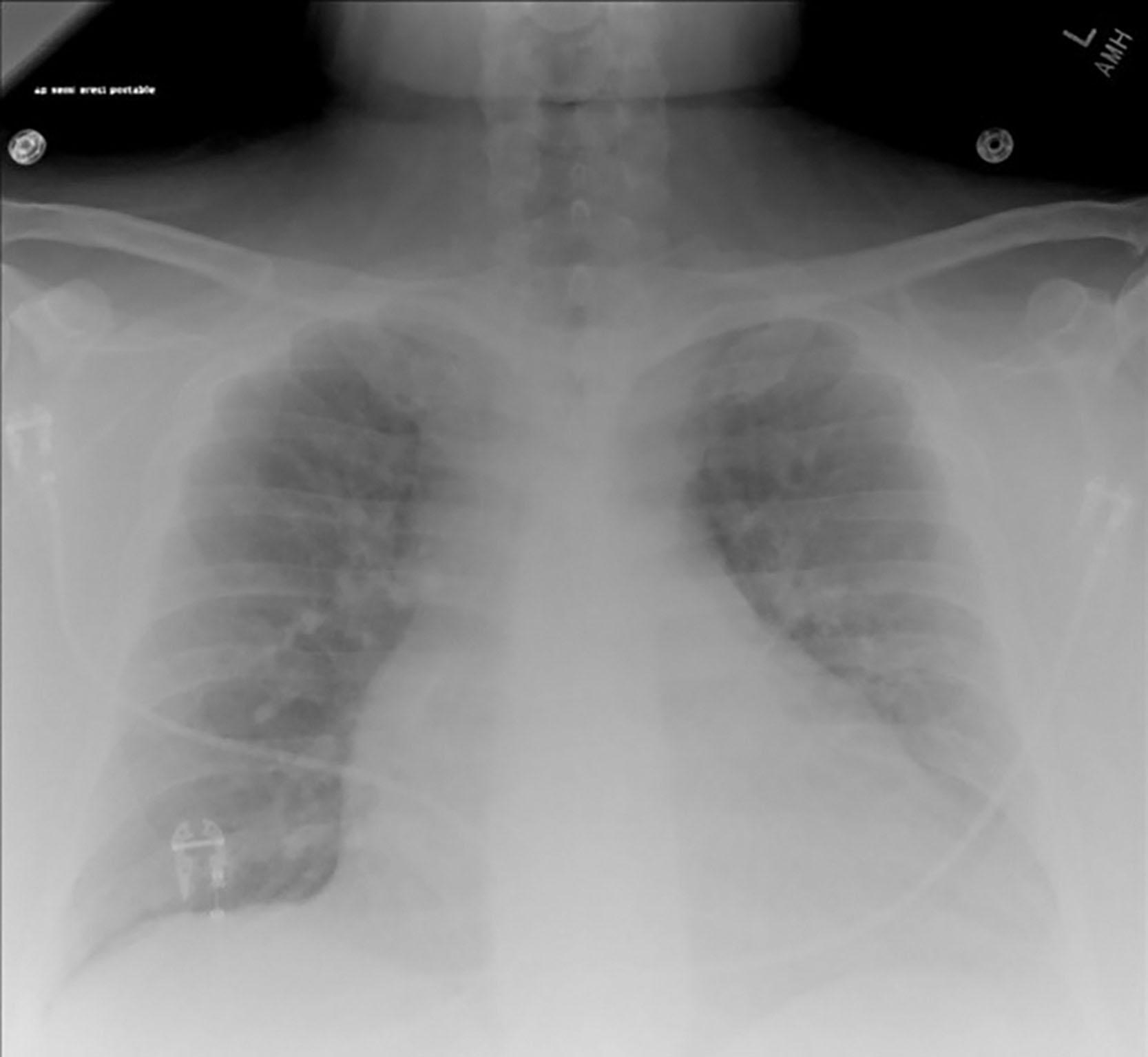Physical Address
304 North Cardinal St.
Dorchester Center, MA 02124
A rapid response event was initiated by the bedside nurse after the patient had sudden acute shortness of breath and severe chest pain. On prompt arrival of the rapid response team, the patient’s telemetry showed tachycardia with a regular rhythm. Chart review showed a 70-year-old male with a known history of coronary artery disease with coronary artery bypass grafting in the past, peripheral vascular disease, hyperlipidemia, type 2 diabetes, and hypertension. He was admitted earlier for chest pain and a syncopal event, which was being evaluated.
Temperature: 96.2 °F, axillary
Blood Pressure: 70/42 mmHg
Heart Rate: 120 beats per min (bpm) – regular rhythm
Respiratory Rate: 30 breaths per min
Pulse Oximetry: 86% oxygen saturation on room air, with saturation improving to 93% on 15 L/min via non-rebreather
The patient was an elderly man in severe distress. He was alert but not oriented, responding to questions with yes and no intermittently. His cardiac exam showed tachycardia with normal heart sounds. He had distended neck veins, cold skin, and decreased intensity of the distal pulses. No peripheral edema was noted. Hepatojugular reflex was not checked because of patient distress. A lung exam showed tachypnea and fine bibasilar crackles. His abdomen was soft, non-tender, and non-distended.
A cardiac monitor and pacer pads were attached immediately. A stat electrocardiogram (EKG) showed tachycardia, irregular rhythm with a narrow QRS complex. He was also noted to have ST elevations in leads V5, V6, and leads I and aVL. The patient was given 2 mg intravenous (IV) morphine for dyspnea and pain. Norepinephrine and dopamine infusions were started for vasopressor support in the setting of suspected cardiogenic shock. Laboratory tests included complete blood count, chemistry panel, electrolytes, troponins, lactate, prothrombin time, international normalized ratio, and type and screen were ordered. A stat chest X-ray was obtained, which showed diffuse pulmonary infiltrates ( Fig. 12.1 ). The patient was given 40 mg of IV furosemide. A stat consult was called to cardiology, and a working diagnosis of acute ST-elevation myocardial infarction with cardiogenic shock was established. The patient was transferred to the cardiac catheterization lab immediately for revascularization.

Become a Clinical Tree membership for Full access and enjoy Unlimited articles
If you are a member. Log in here